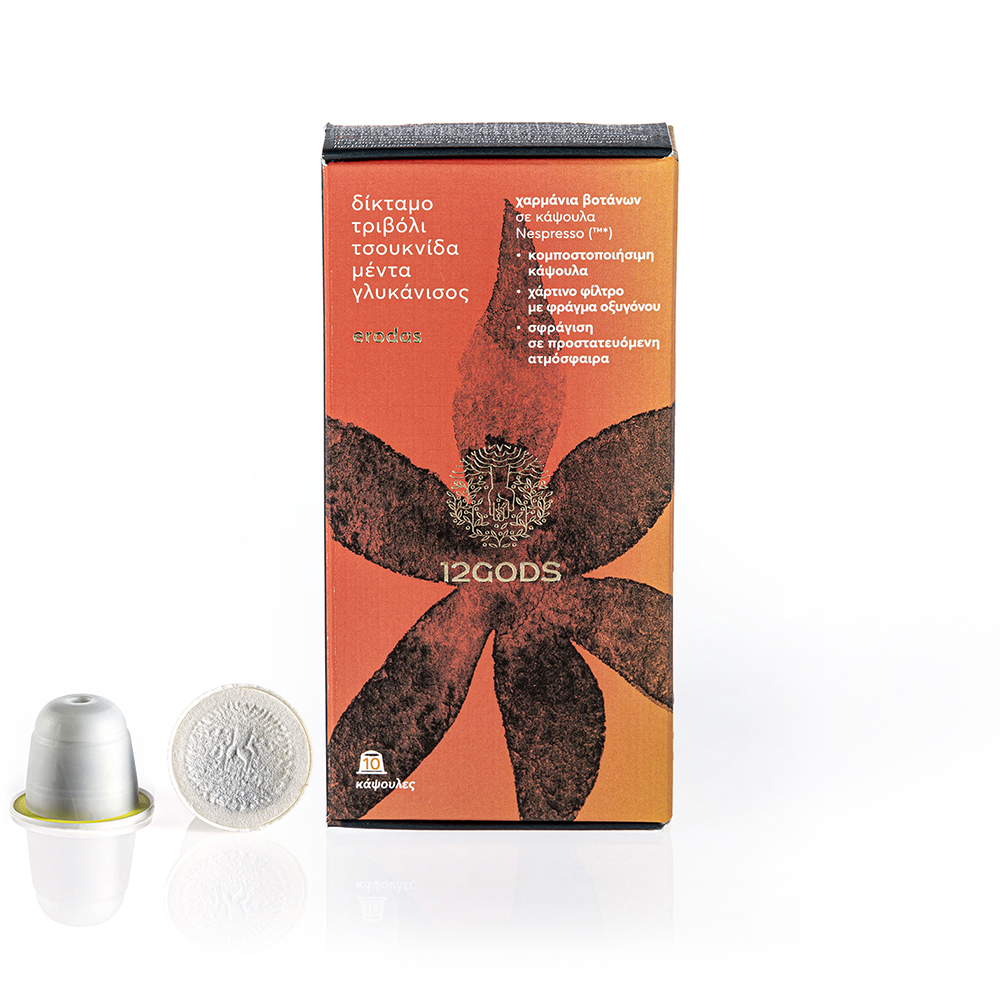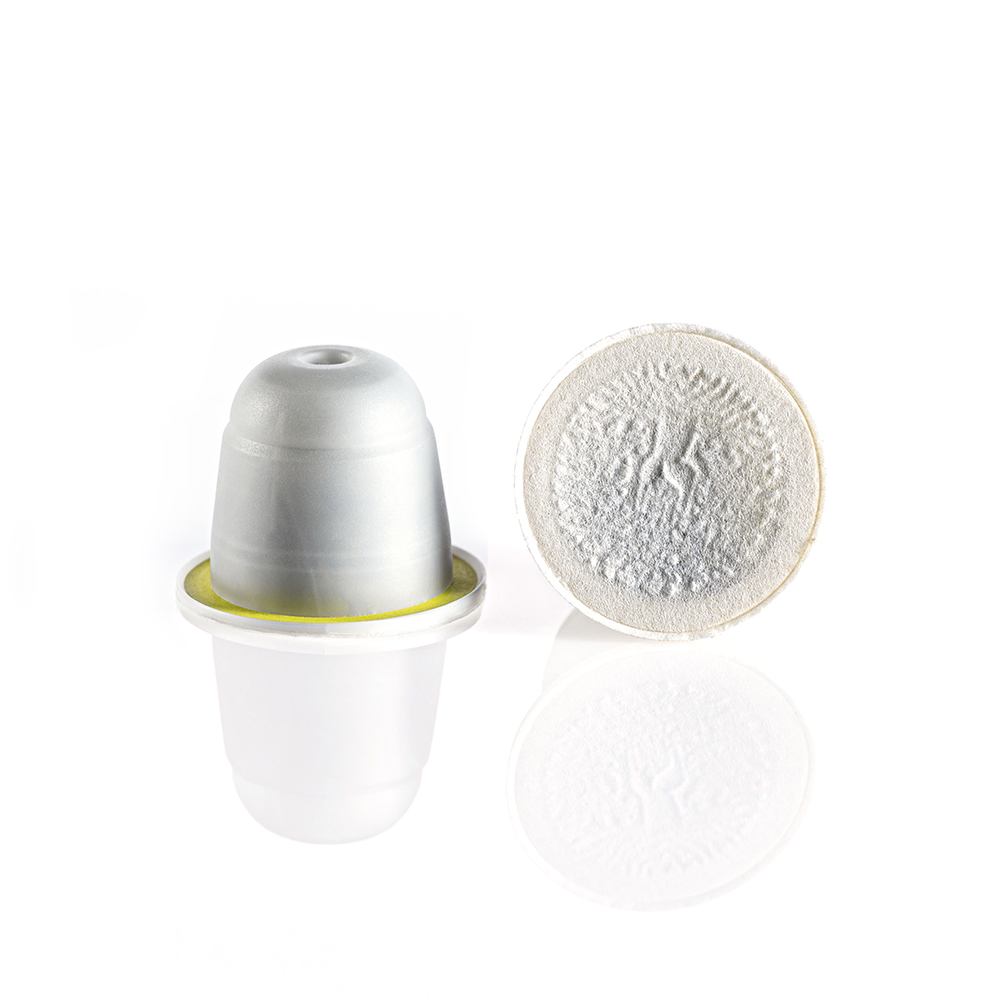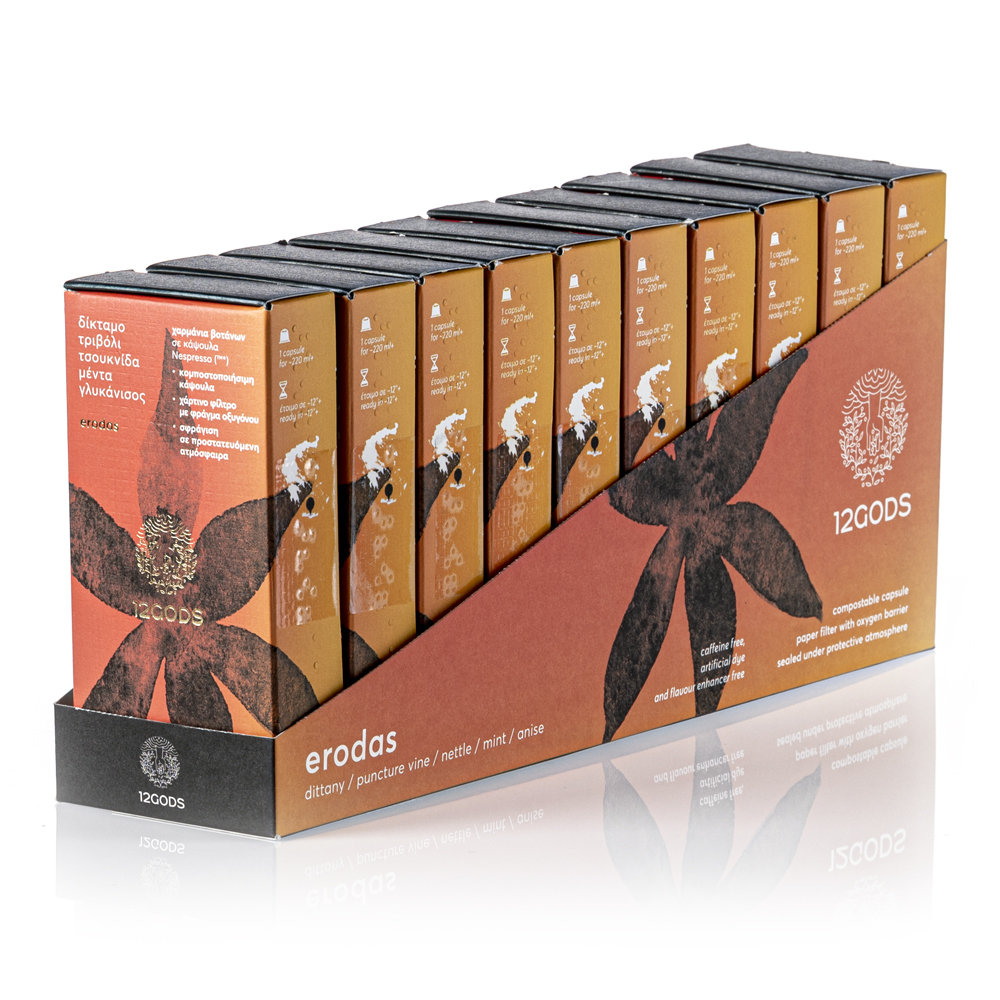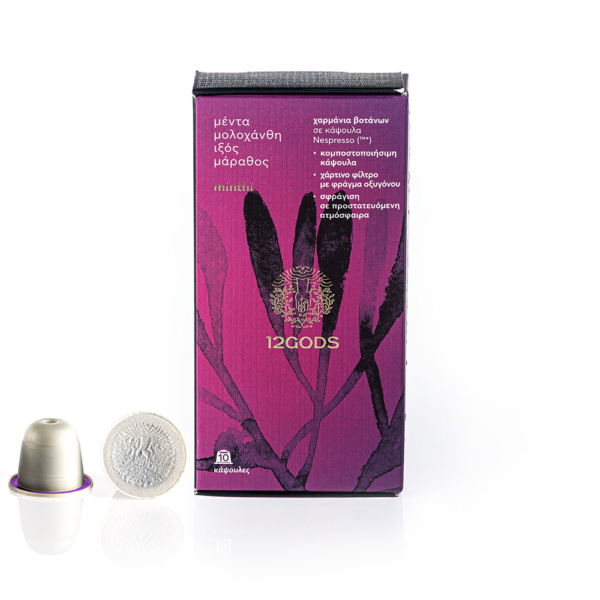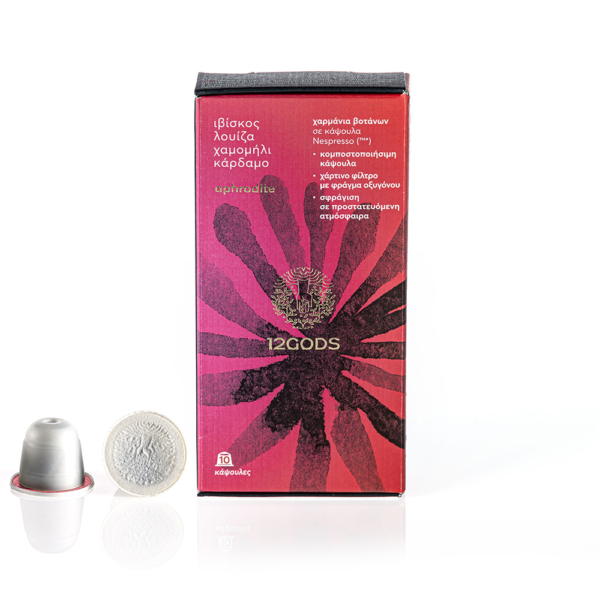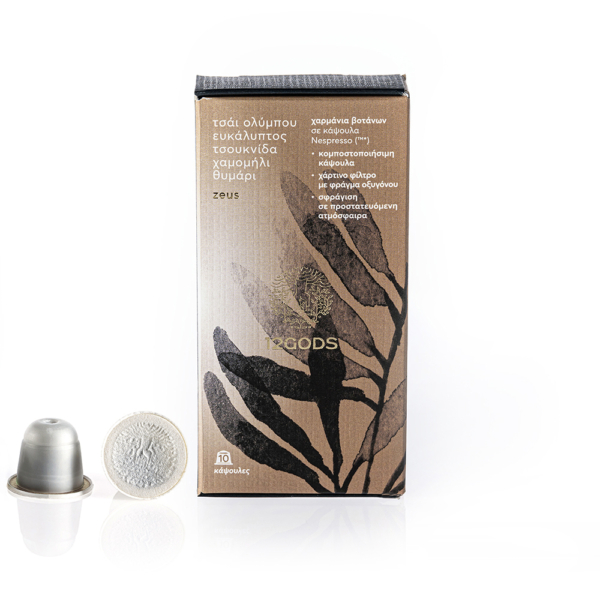
Erodas
Dittany
Puncture vine
Nettle
Mint
Anise
package
for ~220 ml+
€15,00
In ancient times, the Cretan Diktamos was also called "artemide”, giving the plant the name of the goddess who was wounding by poisoned arrows. The statue of the goddess Artemis, who, among other things, was the protector of women giving birth, wore a wreath of dittany on her head. Also in antiquity the dittany was considered capable of rejecting iron bows from wounded bodies. According to the ancient writers, this became known from the wild goats of Crete (the Cretan Capricorns / Capra aegagrus), which when they were wounded and the arrow remained on their body ate dittany and it fell immediately. Aristotle in his work On Animal History introduces us to the painkilling and healing properties of dittany.
Dittany has been known since the Minoan era, when the Minoans made perfumes and ointments from the herb which they used to heal wounds, as well as aromatic oils, mainly with olive oil which they offered to their gods kings and their priests.
Also, aromatic wines, such as dictamnite wine, are mentioned by Dioskouridis in his fifth book On the Matter of Medicine. The aromatic oils made from the herb had tonic and stimulating properties. Pliny, referring to the dittany, says: "The plant called dittany nowhere else grows but on the island of Crete." Theophrastus in his work On Plants Stories writes: "The dittany is a plant that grows only in Crete”.
Hippocrates (460-377 BC) in his book On Female Nature calls it okytokion, a compound word from the adjective okis, meaning fast, quick, and the noun tokos, meaning childbirth. From its first uses, it was recognised for speeding up childbirth. It was used then, as a healing and as a painkiller.
The ancient Roman poet Virgil writes in Aeneid that when Aeneas, the son of Aphrodite, was wounded in the Trojan War, Aphrodite ran to Crete to collect dittany from Psiloritis to rest it on the wounds to heal it. And the dittany did its miracle. Byzantium imports from Crete large quantities of the plant for the preparation of mainly ointments. In the Middle Ages, European Trappists and Benedictine monks used dittany to make the liqueur that bore their name, such as Trappistine and Benedictine, which are considered great appetisers and digestive aperitifs.
Cretan folk medicine used dittany in decoctions - boilers as a panacea for almost all diseases. In the flu of 1918 in Heraklion, the well-known folklorist Evangelia Fragaki informs us, there was a factory that made and sold as anti-influenza "oil", essential oil of laurel, oregano, sage and dittany for abrasions according to the recommendations of doctors. In France it has long been used, along with other plants, to make a special antidiarrheal preparation called Diascordium. France was the main exporter of Dittany for medicinal and myrrh use until 1936. That year France imported 10 tons of dry dittany at a price of 800 drachmas per kilo. That is, the value of the export was 8,000,000 pre-war drachmas, a huge amount. Today the dittany exported from Crete is used as an essential oil, in the perfumery, the distillery for the production of Vermouth and Chartreuse, but also in medicine.
In the 1920s, the cultivation of dittany began throughout Crete. Over the next decade there was a rapid increase in production, as ten tons were collected and used during the year. In 1940 the production of the herb reached fifty tons. The dittany had become known even beyond the borders. Producers from foreign countries turned their attention to the Greek plant and exports at a rate of 80% were then mainly to Italy, France, Germany and Japan.
Today it is sought after, rare and hard to find, because the place that produces it is small and dittany was a herb of such special economic importance in the past - as it is today - that the excessive and reckless exploitation of the wild herb caused its reduction and even extinction in some areas. Dittany is now protected by the Berne Treaty.
Puncture vine (Tribulus Terrestis) is an ancient thorny herb. The name of the plant comes exactly from the three thorns that each of its seeds has and is so "designed" by nature that one of the thorns always looks upwards. The ancient Greeks, based on the structure of the plant, made an iron weapon, the tetrahedron or trivolo, with four sharp tips, one of which always moves upwards, in order to destroy the cavalry of the opponent.
It originates from Southeastern and Mediterranean Europe, temperate and tropical Asia, Africa and northern Australia. Its use since ancient times has appeared in the traditional medicine of the great civilizations in these geographical areas, such as traditional Chinese medicine, traditional Indian medicine (Ayurveda) and traditional medicine of Southeastern Europe, and this has defined its ethnopharmacological significance as medicinal plant. In traditional Chinese medicine, it was listed as a top quality medicine in the first existing Chinese medicine monograph "Shen Nong Ben Cao Jing". In Chinese medicine, its fruits have been used to stimulate the kidneys and as a diuretic and expectorant, that improves vision and treats itchy skin, headache, dizziness and blockage of the mammary glands. In Indian Ayurveda, the fruit was used to treat infertility, impotence, erectile dysfunction and low libido. In addition, the roots and fruits are considered to have cardiotonic properties. In Sudan it has been used as an emollient, in the treatment of inflammatory disorders and in nephritis.
Its Latin name is urtica and it got it from Pliny, because of the burning and itching it causes when it comes in contact with the human body. The Roman soldiers, to face the cold winters during their campaigns, were rubbed with nettles. The ancient Greeks ate it. Hippocrates himself, the father of medicine, had characterised it 2,500 years ago, a "panacea" that is, he had included it in the plants that make for all diseases and used it in more than sixty recipes. The Greek physician Galinos in his book "De Simplicibus Medicamentis ad Paternainum (espurio)" recommended it for many diseases. The benefits of the nettle was also recorded by Chrysippus, Aristophanes and Hesiod. An excerpt from Aristophanes, who advised the Athenians to plant wild nettles even in their gardens, has survived.
Apicius advised a few centuries ago: "When the sun is in Aries, cut female nettles to use them for medicine." Also, the same author has given us a recipe for an omelette with good quality olive oil and plenty of pepper. Petronius, a contemporary writer of Nero, wrote that in order for men to regain their lost sexuality, one would have to whip them with a bunch of nettles on the navel, kidneys and buttocks! The Indians used nettle to treat acne, diarrhea and urinary tract infections. In the world of medicine, nettle has been used to treat pneumonia, rheumatism, allergies and asthma.
Anise seed is probably one of the first spices ever known to mankind. It has been cultivated in Egypt for at least 4,000 years. Known since antiquity, from ancient China where anise was worshiped as a sacred plant, to ancient Greece, where Hippocrates used it to make a type of wine. Hippocrates believed that anise stopped sneezing and used it for the bad odour of the genitals, etc. The Egyptians used it, along with cumin and marjoram, to mummify the dead. From those distant years it began to be used in medicine, but also in magical practices. Also, since ancient times, anise has been used to flavor various pastries and breads. In Rome, for example, the wine of Hippocrates, consisting of water, wine and anise, was widespread. They believed, and had probably found in practice, that it had many healing and aphrodisiac properties. At the same time, together with another herb, for example linden or lemon verbena, soothes the nervous system and helps sleep. In Byzantine times they used anise seeds to make "anisite wine". They believed that "dysuria stops and visceral benefits". Anise was one of the favorite ingredients used by Krateas Rizotomos, a botanist and personal physician of Mithridates VI, who in 302 BC. founded the kingdom of Pontus. Along with 36 other ingredients, he made the famous "mithradatium", a drink that is said to have shielded his king from any disease. The ancient Greeks and Romans considered anise an aphrodisiac (according to Dioscorides) and believed that it retains youth and dispels bad dreams when placed under the pillow at night. They also believed that in order to travel comfortably, those traveling long distances had to drink aniseed drinks. Dioskourides recommended it as a diuretic and perspirant, but also as a medicine against headaches. Pliny mentions that women who were about to give birth, when they smelled anise, had an easy birth.



